Top 5 Easiest Floorings to Install As a DIY Project
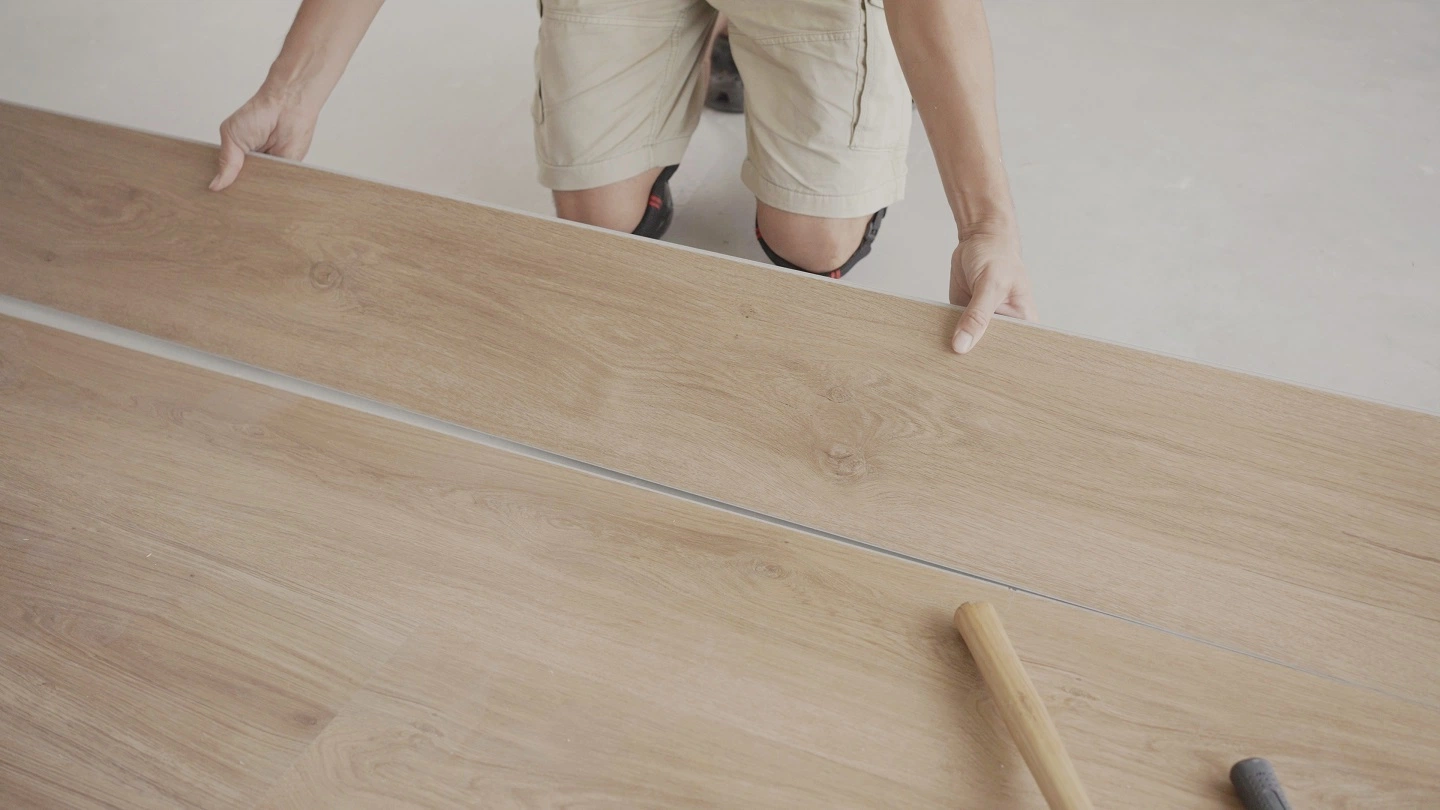
Easiest Floorings to Install
Right flooring gives your property character. Not only does it add aesthetics to your house, but it also offers you warmth and comfort. Sometimes, you are tired of the previous flooring, and you want to renovate it to give the house a fresh new look. After you have chosen the best flooring material suitable for your house, it is time to install it. The flooring installation process might seem complicated, but companies are offering a team of specialists to install the floor, but that can be pretty costly. To save money and time, you can choose flooring among those that are easy to install and DIY-friendly to transform the space.
You may ask why I need easy-to-install flooring. Well, they have multiple benefits, such as hassle-free installation, durability, and low maintenance costs during move-ins and house renovations. It requires minimal work for DIY enthusiasts to learn how to install the flooring without the need to hire pros and spend a huge amount of money on installation. They are also easy to replace and repair, making them convenient for home improvements. It not only saves both time and money but empowers homeowners to customize the space.
Below, you will find the top five easiest floorings to install on your own:
1. Vinyl
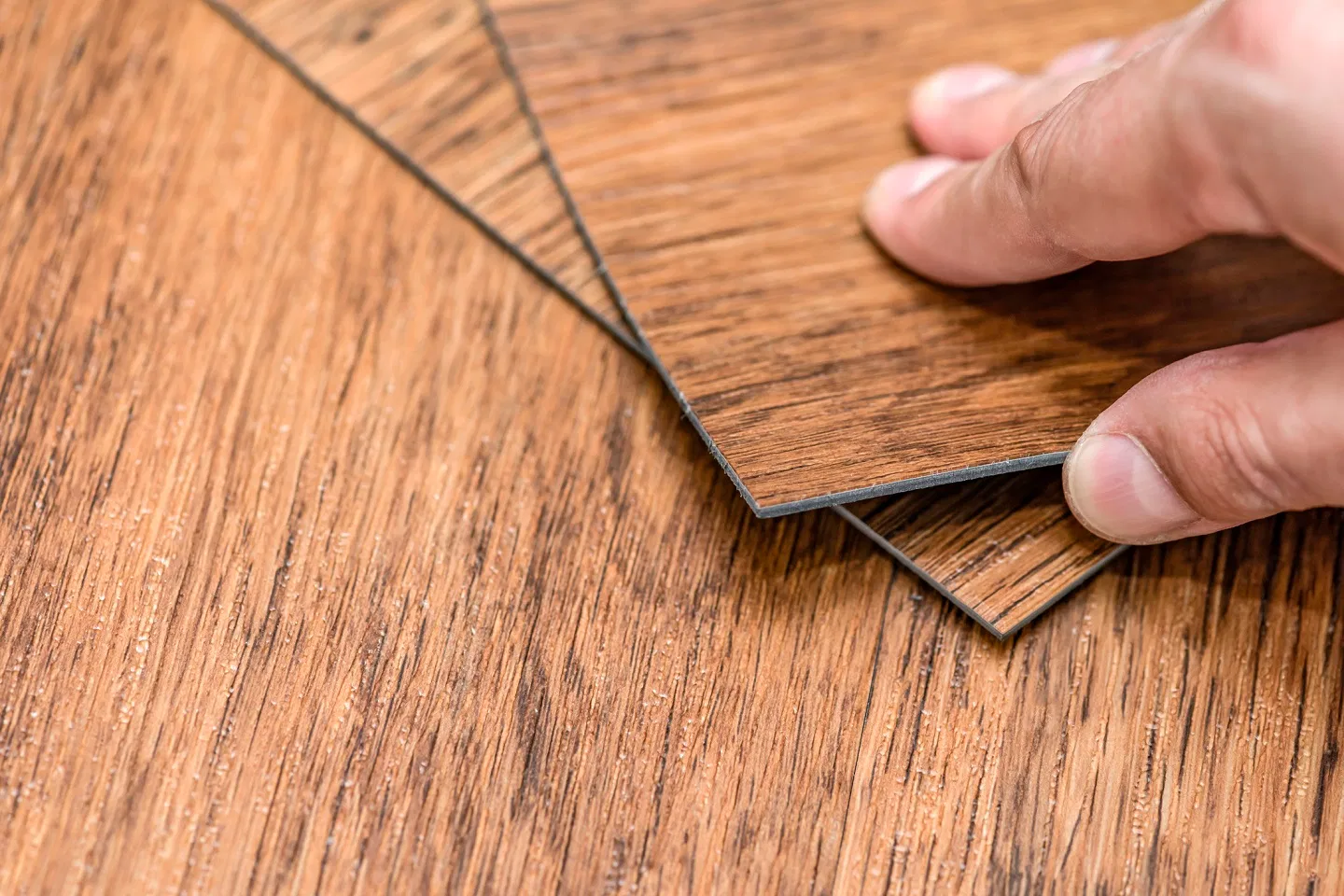
Luxury Vinyl Plank (LVP) flooring is really popular among house owners. Available in multiple styles and shapes, they are durable and easy to maintain, making them perfect for high-traffic places such as living rooms and hallways. They offer water resistance, thus being suitable for high-moisture places such as bathrooms and kitchens. This quality allows the flooring to remain unaffected by humidity. The other benefit of vinyl is being budget-friendly. Since they resemble wood or stone appearance, you have elegance at home without having to spend a huge amount of money.
Tip: If you are too confused to decide how to install flooring, please check out our blogs for more information.
Vinyl is a popular choice for DIY installation projects. You can choose either click-together or peel-and-stick vinyl planks. They both offer click-lock, floating, and interlocking system features making the installation process hassle-free without the need for much equipment. When installing, first prepare the subfloor and make sure it is clean and dry. Before sticking vinyl planks together, adapt them to the room’s temperature and humidity to prevent further repair.
When you have measured the space and planned the layout of the planks’ design, stick them together. Then, stick the flooring to its subfloor using peel-off backing. The final stage in the process is trimming. It enhances the visual appeal and gives you the ultimate guarantee that each and every plank looks seamless and matches the space perfectly. For corners and hard-to-reach spaces, trim the planks with a sharp object so that it fits precisely. Furthermore, if you want to replace or repair vinyl planks, simply swap each one out without disrupting the subfloor.
2. Laminate
Laminate is well-known for its durability, affordability, and ease of installation. It does not require any special tools to install and maintain. It is favored for its natural resilience and minimal upkeep. If you have a limited budget, laminate resembles hardwood or stone at a much lower price, available in a wide range of shapes and styles.
Laminate offers an easy-to-install process because of its click-and-lock system and interlocking mechanisms. This hassle-free flooring is the perfect choice for DIY enthusiasts. It is available in interlocking boards that fit completely together. First, lay a soft foam foundation which functions as a soundproof layer and a cushioning and moisture protection.
Then, it is time to lay the planks in the pattern that favors you the most. Align the boards and lock them into the area by clicking or snapping without the need for adhesives. The flooring and the foundation are strong enough to resist stains, scratches, and fading. Thus, it is a perfect choice for high-traffic areas. The other benefit of laminate is that damaged planks can be easily removed without destroying the subfloor.
3. Carpet Tile
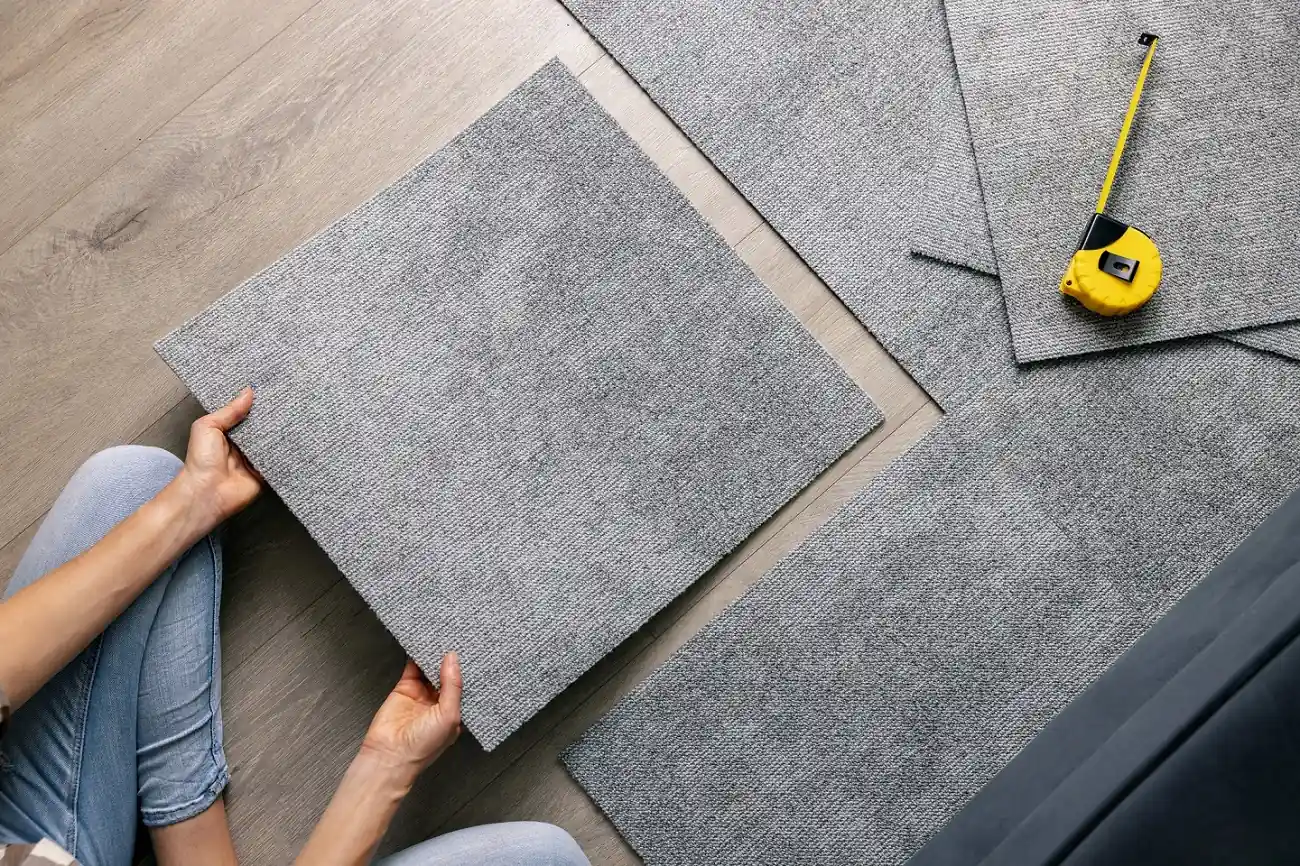
Traditional carpets have their own drawbacks when installed. For a DIY project, carpet tiles are better choices in comparison to carpets since minor DIY expertise is all you need. These cozy versatile tiles offer durability, low maintenance, and flexibility in design. They are available in different colors, shapes, and styles and bring you comfort and luxury. In contrast to carpets, carpet tiles are cost-effective and that is what makes this type of flooring favorable for house owners.
With their ease of installation, carpet tiles are your practical solution. They are easily replaced when damaged or renovated. Similar to vinyl planks, they come in the peel-and-stick format, so a carpet stretcher is not required. The process starts by measuring the space. Then, ensure the subfloor is dry and clean. Cut the tiles by peeling off the backing. Stick them to one another to cover the whole area; they are adhered down with double-sided carpet tape or glue.
Some people might like it to float rather than stick; if so, tape them together on the bottom. Start pressing the tiles firmly onto the surface from one edge corner on one side of the room and move outward in any pattern you desire. You can trim the tiles with a sharp object such as a utility knife or scissors for cheaper tiles to have that perfect fit. Finally, keep in mind that carpet is not recommended for humid places, so do not install it in places prone to water.
4. Engineered Harwood
Looking for engineered hardwood floorings but with a more straightforward installation process, engineered hardwood is calling you! It offers great durability for house renovations. It is also known for its versatility and hassle-free installation process. It is made of multiple layers of wood stuck together.
The sturdy surface of this type of flooring resists humidity and temperature fluctuations, making it the ideal choice for kitchens, bathrooms, and basements. Due to its compatibility features, they can be installed over a wide range of subfloors including wood, plywood, and concrete. They are available in different styles and finishes, giving you the long-lasting look you want.
Mimicking the beauty of hardwood, but a simpler installation option! Engineered hardwood does not require glue or nails, making it an ideal stress-free experience. With its click-lock and floating system, the boards are easily snapped to each other onto the foundation layer. The tongue and groove mechanisms make it resilient against any damage.
5. Cork
Cork feels natural underfoot by offering both warmth and comfort. Made of natural materials, it is a hypoallergenic and eco-friendly flooring material and, especially suitable for houses with small children and pets. The other benefit of cork is offering soundproofing options. It is durable and affordable and requires low maintenance, making it the perfect match for a sustainable flooring solution. On the other hand, cork flooring planks are famous for their easy and quick installation.
You can customize the installation depending on the style of your house. With its interlocking and snapping features, it offers a hassle-free installation. Similar to vinyl planks, cork comes in snap-together planks, making the DIY installation even easier. Since it is simple and budget-friendly, more and more people are tempted to install it on their own.
These user-friendly floorings favor beginners and individuals who want to run the project independently. Thus empowering the house owners to transform the space as they wish. To handle the installation process successfully, choose the right material and follow the manufacturer’s instructions. In this way, you can achieve impressive results and be proud of what you have done!
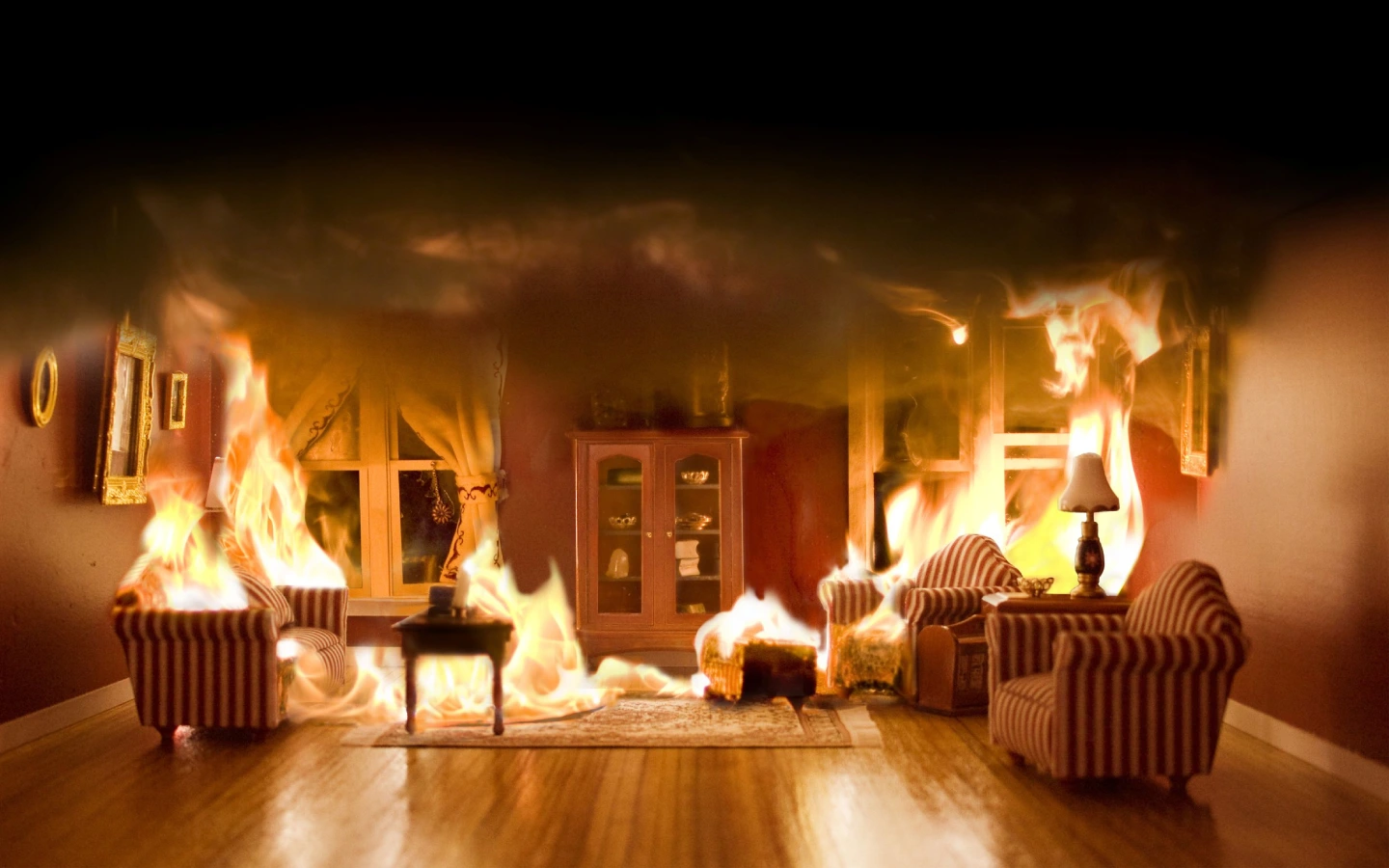
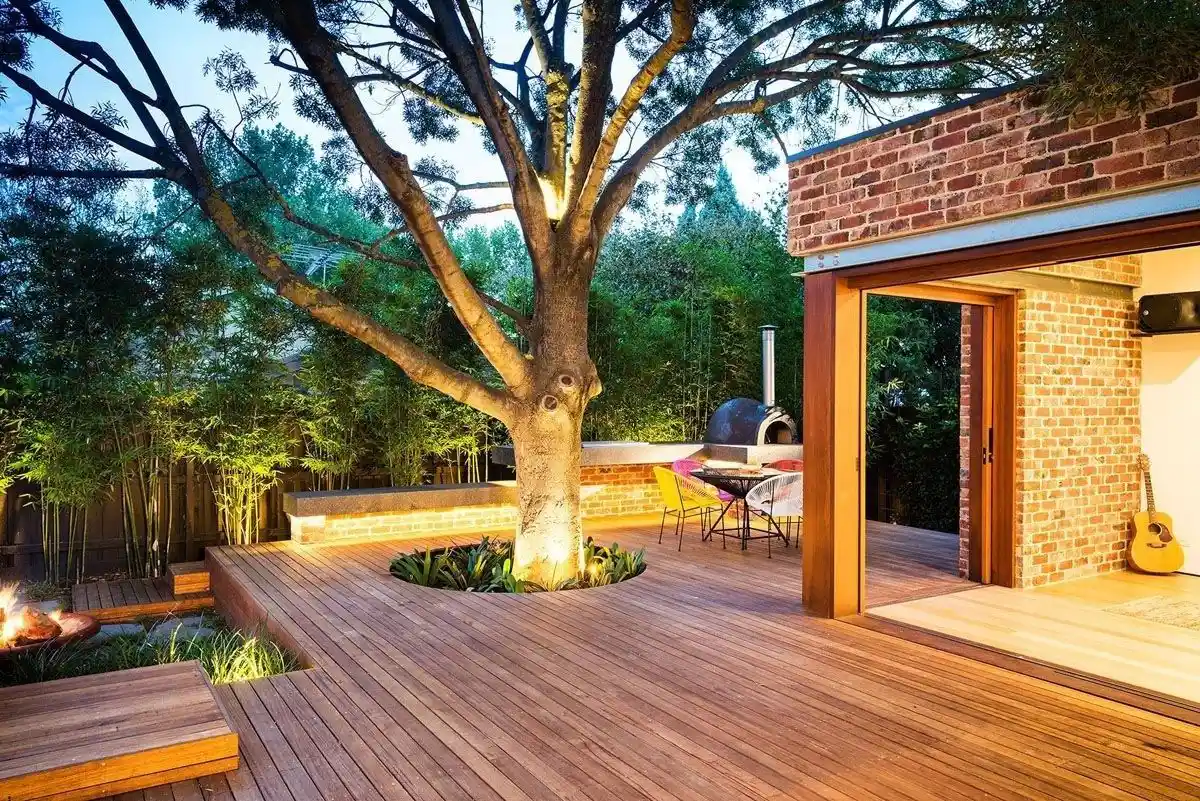

Did you find what you were looking for?